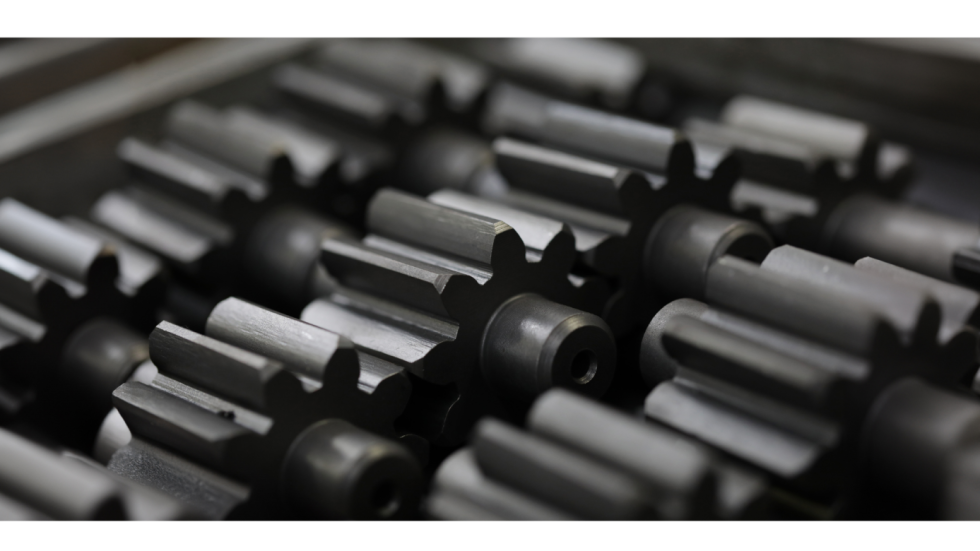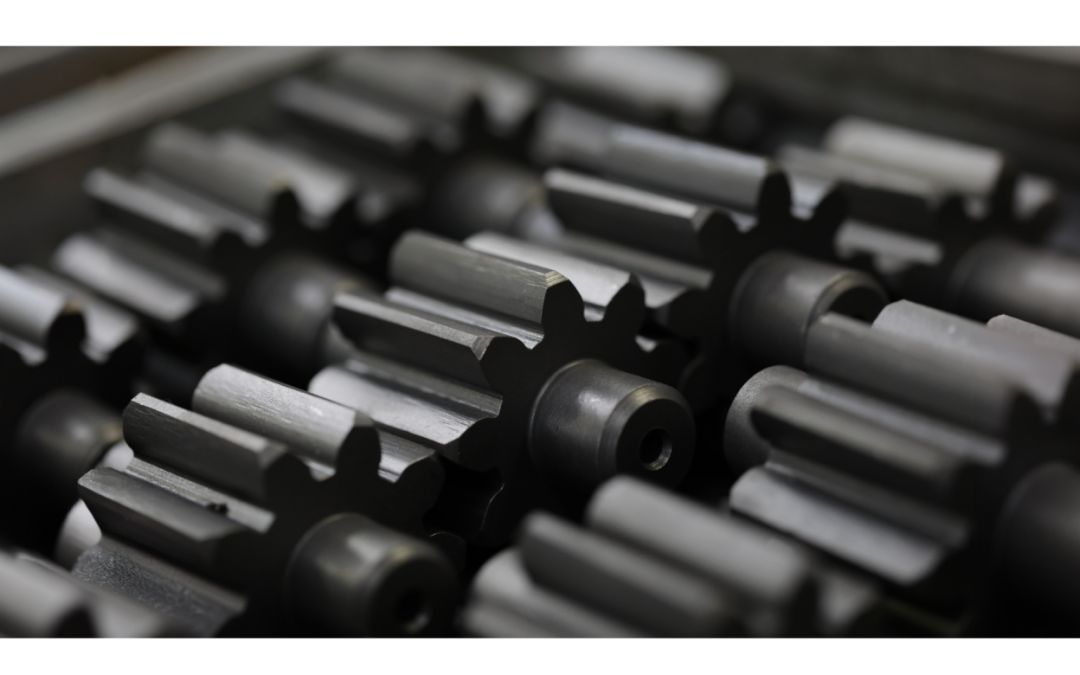Non-Electric Black Nickel Plating Solutions in PA

Finding a black nickel plating solution that delivers consistent color and finish quality can be frustrating. Many traditional black nickel processes suffer from uneven coverage, hot spots, and variations in shade that make it difficult to achieve uniform results across production runs.
At MicroPlating, we deliver electroless black nickel plating solutions engineered for precision and performance. Our process provides the uniform coating thickness and corrosion protection of standard electroless nickel with the added benefit of a non-reflective black finish.
Read on to learn more about how our non-electric black nickel plating can meet your most demanding application requirements.
Black Electroless Nickel Plating vs. Black Nickel Plating
Black electroless nickel plating differs from regular black nickel plating solutions in several important ways. The table below highlights the differences between these two processes:
| Feature | Black Electroless Nickel Plating | Black Electrolytic Nickel Plating |
| Process | Uses chemical reaction without electricity; nickel-phosphorus alloy deposits through an autocatalytic process | Requires an external electrical current to deposit nickel ions from anodes onto the substrate surface |
| Coating Uniformity | Provides uniform deposit thickness across all surfaces, including complex geometries, threads, and recessed areas (±0.0001″ tolerance) | Creates uneven coating with thicker deposits on edges and corners due to varying current densities |
| Substrate Compatibility | Can coat both conductive and non-conductive materials | Requires a conductive substrate for deposition |
| Corrosion Resistance | Superior corrosion protection due to phosphorus content, creating a uniform, non-porous coating | Lower corrosion resistance due to uneven coating thickness and potential gaps |
| Hardness | Higher as-plated hardness; can achieve up to 69 Rc with post-plate heat treatment | Bright nickel deposits reach 50+ Rc as-plated |
| Cost & Production | Higher cost per part; requires careful bath chemistry management | Lower cost; faster production with shorter turnaround times |
MicroNite | Black Electroless Nickel Plating
MicroNite is a proprietary electroless black nickel plating solution from MicroPlating. This dual-layer process combines the protective qualities of traditional electroless nickel with a non-reflective black finish engineered for demanding industrial and military applications.
Plating your parts in MicroNite electroless black nickel offers many benefits:
Hardness: Black electroless nickel achieves hardness levels between 58 and 63 Rc after passivation and post-plate heat treatment. This exceptional hardness makes coated parts highly resistant to wear and serves as an effective alternative to black powder coating or hard chrome plating for applications requiring durable, wear-resistant surfaces.
Corrosion Resistance: The dual-layer structure features a high-phosphorus electroless nickel base combined with a low-phosphorus black topcoat and final passivation for superior corrosion protection. This engineered approach provides uniform coverage that can withstand up to 1,000 hours of salt spray exposure, including in recessed areas like holes, slots, and threading.
Non-Reflective & Conductive Coating: The black surface finish exhibits 4 to 6% light emissivity, creating a minimally reflective appearance ideal for optical systems and defense applications. Despite its decorative black appearance, the coating maintains slight electrical conductivity through its low-phosphorus topcoat, allowing parts like electrical connectors to meet MIL-DTL-38999 specifications.
Regulatory Compliance: MicroNite black electroless nickel plating meets RoHS, REACH, and ELV compliance standards. This makes it suitable for use across multiple industries with strict environmental and material restrictions.
Superior Consistency: The electroless process delivers enhanced color uniformity and abrasion resistance compared to zinc or zinc nickel black coatings. This consistency eliminates the shade variations and coverage issues common in black plating methods.
MicroNite vs. Other Plating Processes
MicroNite outperforms black finishing methods by delivering superior hardness, corrosion protection, and coating uniformity in a single process. The table below compares MicroNite against common alternatives to help you evaluate which solution best meets your performance requirements:
| Feature | MicroNite | Black Powder Coating | Black Oxide | Black Zinc Plating |
| Process Type | Autocatalytic chemical plating with dual-layer structure | Electrostatic spray of polymer powder cured with heat | Conversion coating through chemical reaction with the metal surface | Electrolytic plating with black chromate conversion coat |
| Coating Uniformity | Perfectly uniform coverage on complex parts, threads, and internal areas | Prone to thickness variations, especially on edges and recesses | No dimensional change as it converts the surface rather than adding a coating | Uneven coating thickness due to varying current densities |
| Hardness & Wear Resistance | 58-63 Rc; extremely durable and abrasion-resistant | Softer than plating; susceptible to chipping or scratching | Minimal wear resistance; relies on oil sealant for protection | Softer than electroless nickel; provides moderate abrasion resistance |
| Corrosion Resistance | Can withstand up to 1,000 hours of salt spray exposure | Provides a thick, robust barrier against moisture and chemicals | Minimal protection without heavy oil or wax sealant | Depends on the quality of the chromate topcoat |
| Electrical Conductivity | Slightly conductive; meets MIL-DTL-38999 specifications | Non-conductive; acts as an electrical insulator | Maintains the conductivity of the base metal | Conductive coating |
MicroNite Can Help the Following Industries
MicroNite’s dual-layer structure and uniform coverage make it ideal for a wide range of industries and applications:
Automotive: Engine components, valves, and electrical parts require coatings that can handle extreme temperatures and constant vibration. The 58-63 Rc hardness helps these parts resist wear while maintaining corrosion protection in demanding environments.
Manufacturing: Injection molds and tooling benefit from the uniform deposit thickness that reaches into threads, slots, and recessed areas where other coatings fail. This consistent coverage extends tool life and reduces downtime from premature wear.
Aerospace: Aircraft electrical connectors and precision components need coatings that meet strict military specifications while maintaining dimensional accuracy. The slight conductivity and MIL-DTL-38999 compliance make it suitable for critical aerospace applications.
Medical: Surgical instruments and medical device components require coatings that combine corrosion resistance with regulatory compliance. The RoHS, REACH, and ELV compliance ensures compatibility with strict medical industry standards.
Choose MicroNite for a Superior Electroless Black Nickel Plating Solution
Black electroless nickel plating delivers the hardness, corrosion resistance, and uniform coverage that demanding applications require. MicroNite takes these core benefits further with a non-reflective black finish and electrical conductivity that other plating and powder coating methods cannot match.
At MicroPlating, we’ve engineered MicroNite specifically for industries where performance and precision are non-negotiable. Our dual-layer process provides consistent results across production runs, eliminating the color variations and coverage issues common with conventional black plating solutions.
Click below for a quote and to learn more about how MicroNite can improve the performance and longevity of your components.

